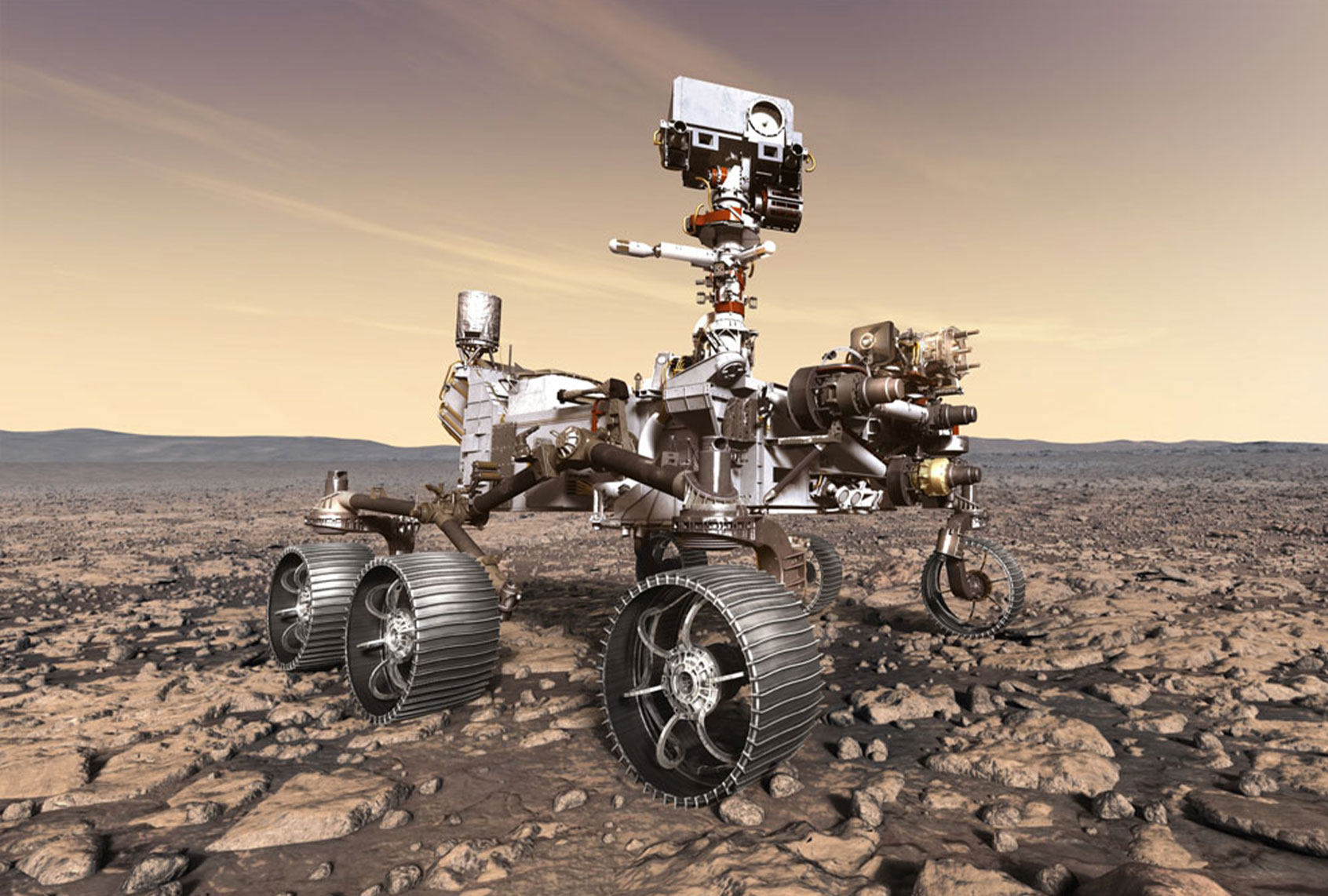On Thursday, a rover the size of a Mini Cooper parachuted through thin Martian air for seven nail-biting minutes before successfully touching down on the red planet. The landing of Perseverance, as the rover is dubbed, marks a new era in Martian exploration — as the fifth NASA (National Aeronautics and Space Administration) rover to ever touch down on Mars and the first that carries a helicopter in tow.
Mars is 126 million miles from Earth, meaning it takes 11 minutes for radio signal traveling at the speed of light to reach us. Hence, during the landing, which many Americans were watching live at home, Perseverance had to autonomously control its descent without real-time instructions from NASA engineers on Earth, who could only watch as the signals came in.
Perseverance, which launched from Florida’s Cape Canaveral Air Force Station on July 30, 2020, differs from its predecessor Martian rovers in a few key ways. First, it is the heaviest and most technologically complex rover to land on Mars. It also landed on Jezero Crater, located north of the Martian equator, which is considered the most dangerous landing spot a rover has ever landed. Yet its location is critical to the core of the rover’s mission: to look for evidence of ancient microbial life on Mars, and understand how Mars evolved from a habitable world to the cold, barren planet it is today. Jezero Crater is a 28 mile-wide impact crater that used to be a lake; scientists believe it’s an ideal place to look for evidence of ancient microbial life on Mars.
[Read more: Why some scientists believe life may have started on Mars]
Perseverance is also unique for being a sample-return mission, meaning that Perseverance will collect and store Martian rock and soil samples, which will eventually be returned to Earth. Sample return missions are extremely rare due to their expense; indeed, there has never been a sample return mission from another planet. While the mission to return samples from Mars has yet to be fully planned, NASA scientists say that if all goes to plan we could have samples from Mars back on Earth by 2031.
As part of the Perseverance mission, NASA will also deploy the Ingenuity helicopter, which is mounted on the rover, to study the Martian atmosphere. This will help NASA study how to produce oxygen from Mars’ carbon dioxide atmosphere, an important step for the future of human exploration on Mars.
Immediately after Perseverance landed on Mars on Thursday, NASA received its first images from the rover. The image included rocks, pictured through a dusty lens— likely, remnants from its decent.
Hello, world. My first look at my forever home. #CountdownToMars pic.twitter.com/dkM9jE9I6X
— NASA's Perseverance Mars Rover (@NASAPersevere) February 18, 2021
This is a developing story that will be updated.

